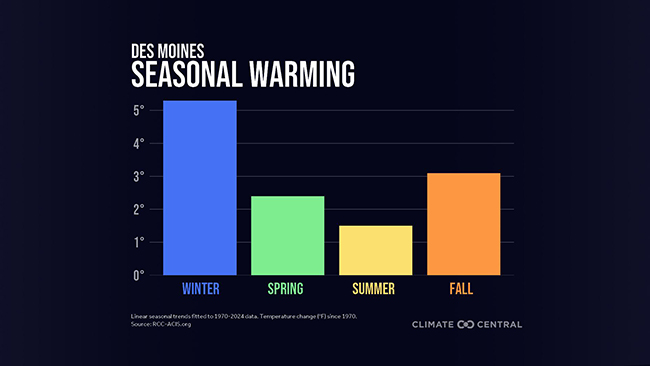Direct Impacts
Direct Impacts thompsbbTemperature

Figure 10.5. Seasonal warming in Des Moines in Des Moines from 1970–2024. (graphic by Climate Central, used with permission, climatecentral.org) All seasons are becoming warmer (see Figure 10.5), especially spring and winter (except for February).
- There are fewer cold nights.
Precipitation
- Heavy downpours with 2–3 inches of rain or more in one event are becoming more common.
- Spring and fall are becoming wetter on average, especially in April and October.
- Rapid-onset droughts, which are short in duration, are becoming more common in the summer with warm conditions and reduced precipitation in July and August.
- Most of the state experiences more than 40% of its annual precipitation on the 10 wettest days of the year.
Growing Season
- The duration of the growing season has increased by 8–12 days.
- Spring frosts are occurring earlier and fall frosts are occurring later than they used to.